Jump to Heading
OBJECTIVES:
Upon completion of this lesson, you will be able to:
- Describe the phases of fire and explain each phase of fire.
- Define the flashover, its characteristics/ symptoms and the preventive measures.
- Define the phenomenon of Back draft characteristics/ symptoms of Back draft and its preventive measures.
- Describe the key terms related to “BLEVE”.
- Define BLEVE
- Describe the main characteristics of “BLEVE”.
- List the Safety measures to prevent/ avoid BLEVE.
Fire Behavior | Phases of Fire | Flashover | Backdraft | BLEVE
1. Phases of Fire:
There are four phases of fire according to Its magnitude and development:
1. Ignition.
2. Growth.
3. Fully Developed.
4. Decay.
1.1. Description of Phases of Fire:
1.1.1 Ignition Phase:
The phase of fire development in which the fire limited to the immediate point of origin.
1.2 Growth Phase:
The phase of fire development in which the fire starts spreading beyond the point of origin and beginning to involve other fuels in the adjoining area.
1.3 Fully Developed Phase:
The phase of fire development in which all available and heat is produced at the maximum rate.
1.4 Decay Phase:
In the development phase, fire has consumed either the available fuel or oxygen and starts to come down and ultimately extinguishes.
2. Flashover:
The simultaneous ignition of all combustible materials in an
enclosed area when the surfaces in a space are heated to the
temperature at which the flammable gases are hot enough to ignite.
2.1 Flashover Temperature:
Flashover normally occurs at 500 C (930 F) OR 1100 F for ordinary combustibles.
2.2 characteristics/symptoms of Flash-over:
2.3 Sequence of a Room Fire
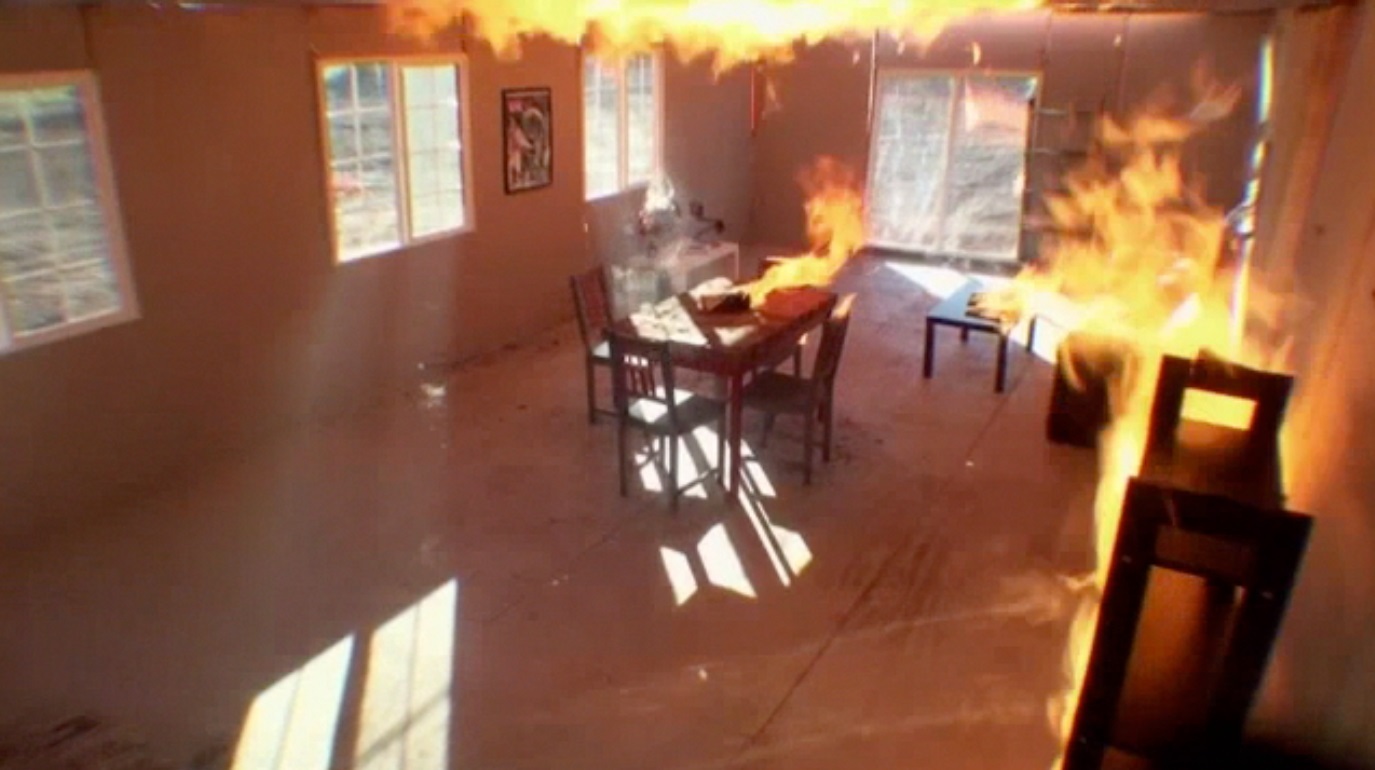
Room fire at 5 minutes is still limited to paper in wastebasket; HRR 100 kW.
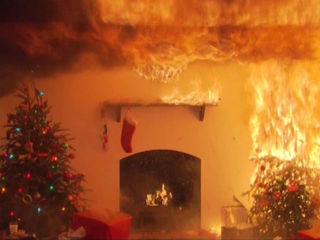
Fire at 7 minutes has spread to draperies by direct flame contact and radiant heating from sofa. HRR increasing very rapidly as vertical flame spread dominates; HRR _ 1,000 kW (1MW).
Steps and Phases of Flashover in Room.

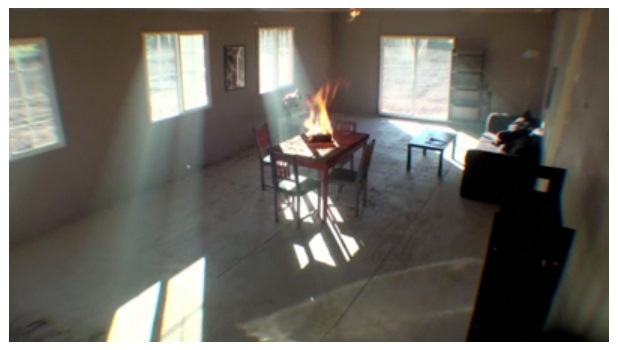

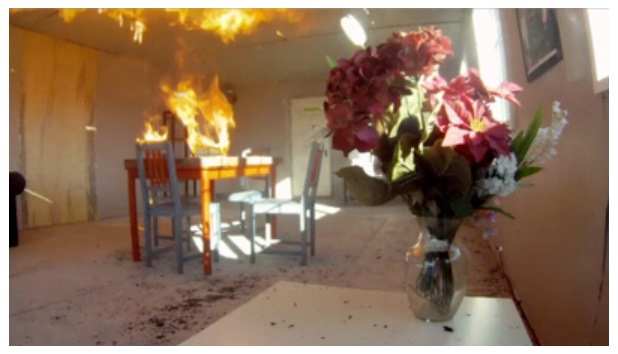

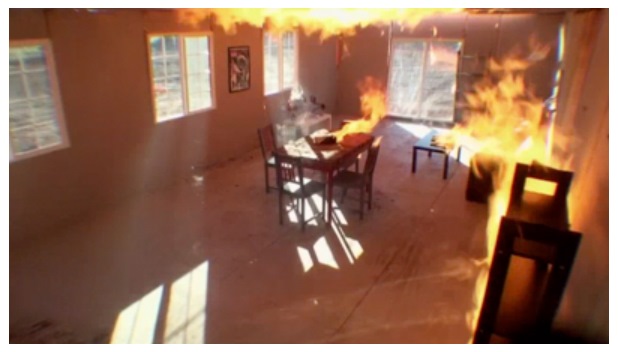
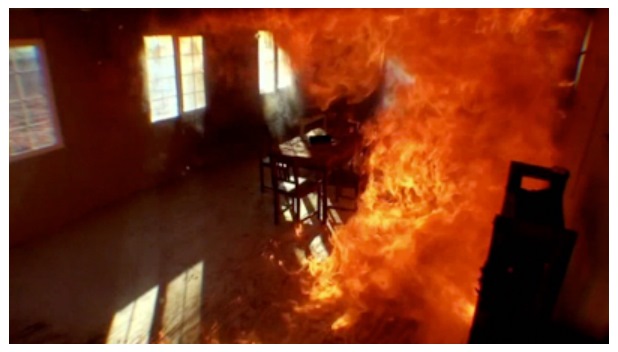


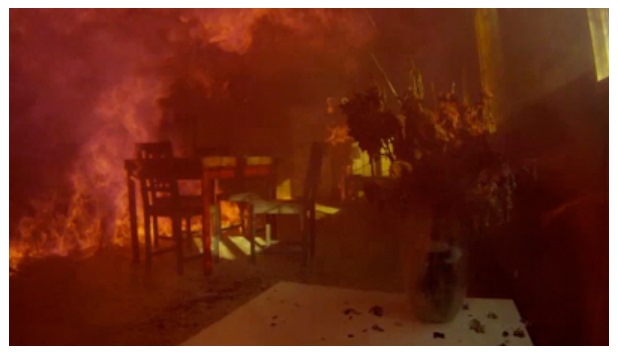
Fire at 9 minutes. Radiant heat ignition of tops of furniture, and the flames in the smoke layer become continuous (rollover); HRR _ 2.5 MW.
Fire at flashover transition (10.75 minutes). All contents are on fire, and there is a large plume exterior to room; HRR _ 5.2 MW.
2.4 Preventive Measures:
- Use of appropriate PPE.
- Careful entry (Sitting beside the door instead of in front of it).
- To be ready to fight shooting flames.
Back draft:
A situation where fire has burned out all the Oxygen in a room, leaving only fuel, gases and smoke at a high temperature. Reintroduction of Oxygen will restart combustion often in form of an explosion.
3.1 Characteristics of Back draft:
The following conditions may indicate a backdraft or smoke explosion condition:
- Smoke under pressure exiting through small building openings
- Black smoke becoming dense, greyish yellow
- Confinement and excessive heat
- Little or no visible flame
- Smoke leaving the building in puffs and being drawn back in
- Smoke stained and/or rattling windows
- Muffled sounds
- Sudden, rapid movement of air and smoke inward when an opening is made
- Hot or warm outside walls with little or no fire evident

3.2 Preventive Measures of Backdraft:
- immediate Evacuation.
- Proper PPE
- Boundary Cooling.
- Careful Entry.
- Ventilation.
4. Key terms related to “BUEVE”:
4.1 Vapor Pressure-.
The pressure exerted by the gaseous form of a substance when the liquid and the vapor are in equilibrium.
4.2 Fire Balls:
Fire ball are created from the Ignition of flammable vapor clouds, Such clouds burn with great Intensity, with burmup rates measured In tones of fuel per second.
4.3 Explosions:
Means rapid or violent processes in which a large amount of energy is released. Explosions have great disaster potential and cause great loss of life and damage to property.
5. BLEVE (Boiling Liquid Expanding Vapor Explosion):
“An explosion caused by rapid expansion of flammable gas stored in a container resulting in sudden release of huge quantities of atomized burning liquid which appear as a fire ball and radiating intense heat all around”.
An explosion that occurs when a tank containing a volatile liquid is created (NFPA 2nd Edition, 2009).
6. Characteristics of BLEVE:
- Typically a BLEVE occurs after a metal container been heated above 538 ‘C.
- Metal Is unable to withstand the high vapor pressure.
- Most BLEVE, s occurs when containers are less than V* to 1/3 full of liquid.
- Fire balls may occur at the time of rupture.
- Fire balls result in intense heat exposure in the premises.
- Studies have shown that BLEVE occurs in 30 minutes after the fire has started.
7. Safety Measures to Avoid/ Prevent BLEVE:
The container carrying LPG must be filled more than half and ideally to its full mark.
No personnel should be allowed to enter in the premises j where a potential of BLEVE exists.
Fire fighting must be done from a safe distance of 40-50 meters, which is a minimum standard.
Foam should be used as fire fighting medium as it does smothering as well as cooling actions and tends to lower down the temperature.

John Doe, a seasoned firefighter, shares his vast knowledge of fire safety and emergency preparedness at arescuer.com, aiming to empower and educate
